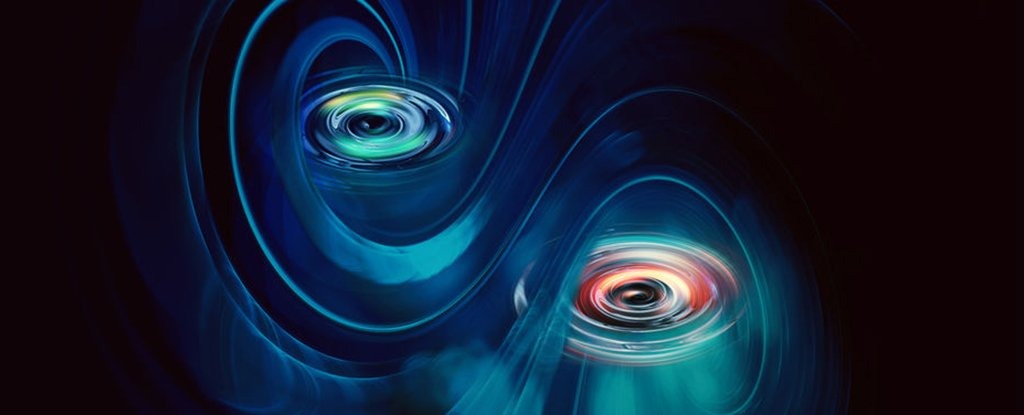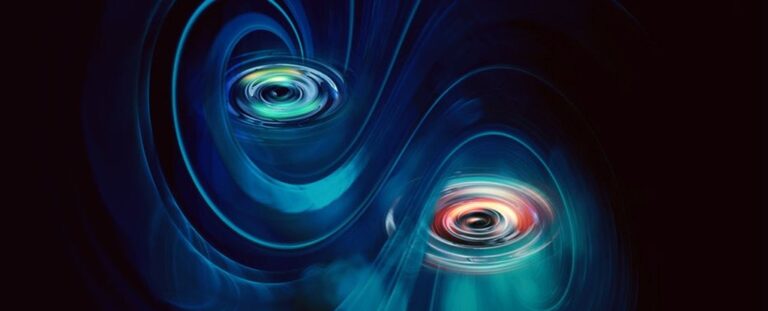Quantum Entanglement Has Now Been Directly Observed at The Macroscopic Scale
When two particles or things are entangled, even though they may be far away, their individual characteristics are connected in a way that is not permitted by the laws of conventional physics.

It’s an odd phenomena that Einstein called “spooky activity at a distance,” yet scientists find it interesting because of how odd it is. A scale far larger than the subatomic particles typically associated with entanglement was used in a 2021 research to directly see and record quantum entanglement.
Although the tests used two extremely small metal drums that were each one-fifth the width of a human hair, the dimensions involved are still quite modest from our point of view, but in the world of quantum physics, they are incredibly enormous.

According to physicist John Teufel of the National Institute of Standards and Technology (NIST) in the US, “If you study the position and momentum data for the two drums individually, they each just seem hot” last year.
But when we combine them, we can see that what appears to be random motion in one drum is actually highly associated with it in a way that can only be made feasible by quantum entanglement.
Although there is no reason to believe that quantum entanglement cannot occur with macroscopic objects, it was previously believed that these effects were not apparent at bigger scales or that the macroscopic scale was subject to other laws.
That may not be the case, according to recent studies. The same quantum laws really apply and are visible in this situation as well. Microwave photons were used to vibrate the small drum membranes, which were kept in sync with respect to their positions and speeds.
The drums were cooled, entangled, then monitored in stages inside a cryogenically cold container to eliminate outside interference, a typical issue with quantum states. The states of the drums are then encoded in a radar-like reflected microwave field.
Macroscopic quantum entanglement had been the subject of earlier investigations as well, but the 2021 study went further: all essential measurements were taken rather than assumed, and the entanglement was created in a deterministic, non-random manner.
Researchers who are also working with macroscopic drums (or oscillators) in a state of quantum entanglement have demonstrated how it is feasible to detect the location and momentum of the two drumheads at the same time in a related but distinct series of experiments.
The drumheads in our work display a collective quantum motion, according to physicist Laure Mercier de Lepinay of Finland’s Aalto University. The drums vibrate at a phase that is the opposite of one another, so when one is in the final position of the vibration cycle, the other is in the final position simultaneously.
In this case, treating the two drums as a single quantum-mechanical object cancels out the quantum uncertainty of the drums’ motion.
This story is noteworthy because it circumvents Heisenberg’s Uncertainty Principle, which states that momentum and location cannot be accurately measured at the same time. According to the concept, recording either measurement would cause interference with the other due to a phenomenon known as quantum back action.
This particular piece of research uses that entanglement to avoid quantum back action and supports the other study in showing macroscopic quantum entanglement, effectively defining the boundary between classical physics (where the Uncertainty Principle applies) and quantum physics (where it currently doesn’t appear to).
The ability to manage and entangle items on a macroscopic scale such that they can power next-generation communication networks is one of the potential future uses of both sets of results.
Physicists Hoi-Kwan Lau and Aashish Clerk, who weren’t involved in the studies, wrote in a commentary on the work that was published at the time, “Apart from practical applications, these experiments address how far into the macroscopic realm experiments can push the observation of distinctly quantum phenomena.”
The first and second studies were both released in Science.
Do not forget to share your opinion with us to provide you with the best posts !




0 Comments